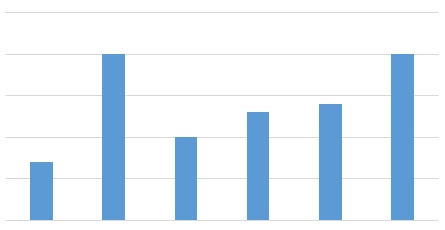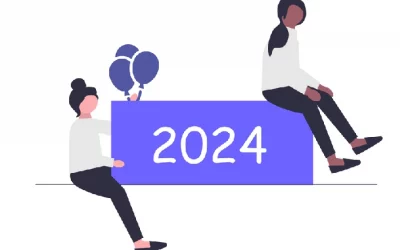FP&A
Why bars are better than bubbles
The infographic in Raconteur includes a chart that aims to make quantitative comparisons through the use of circles of different areas.

The infographic in the Raconteur supplement distributed with today’s Times includes a chart that aims to make quantitative comparisons through the use of circles of different areas.There are two sets of bubbles, denoted by the pink and blue colours which, according to the legend, represent “IT Outsourcing” and “Business Process Outsourcing”. The bubbles in each pair overlap, and the colour of the intersection is represented by the mix of the two shades. The intersections are labelled with the names of each measure.
FOLLOW US

At first sight, I thought that each pair of bubbles was a Venn diagram and that the area of overlap represented some meaningful data. However, on closer inspection I realised that the intersection had no meaning whatever and was simply a way of bunching up the bubbles so that they fit within the space available.Each bubble is labelled with a percentage, and it appears that the area of the bubble encodes that value. The problem with this method of encoding data is that the human brain is not very good at judging the relative areas of circles.William Cleveland and Robert McGill conducted empirical research on graphs and the human visual system that was published in the journal “Science” in 1985. They discovered a rank order for methods of encoding quantitative data in terms of the accuracy of perception of the values by their subjects. The most accurately perceived method of encoding data was something they described as “position along a common scale”, which is the method used in a bar chart. They found area to be perceived much less accurately, being ranked only five out of seven in the various methods of encoding data that they studied.To illustrate this, I took the data from the first line of pink bubbles (called strategic measures in the infographic) and created two alternative visualizations in Excel. The first encodes the data within bubbles, the areas of which are proportional to the percentages given. This creates a chart similar to the one in the infographic:

The second visualization I made was this bar chart:

Which chart do you think is more effective in enabling you to compare the values?
Latest Posts
What does 2024 look like for FP&A teams?
FP&A What does 2024 look like for FP&A teams? 2024 poses unique challenges for FP&A teams amidst a shifting financial landscape. Here we delve into the anticipated obstacles, developmental prospects, and socio-economic trends that will shape the course of...
Navigating a 2024 Tech Investment Slowdown
FP&A Navigating a 2024 Tech Investment Slowdown Managing Internal Tech Investment Slowdowns in 2024 with savvy finance strategies: streamline operations, rethink ROI, and set dynamic objectives for a resilient financial approach.As we step into 2024 amid economic...
Maximizing Private Equity Value Creation through Data and Analytics
FP&A Maximizing Private Equity Value Creation through Data and Analytics Uncover the evolving landscape of private equity value creation, where data analytics and ESG integration play pivotal roles. Harness transformative, data-driven strategies for that crucial...




